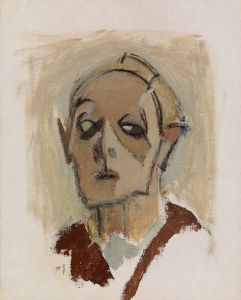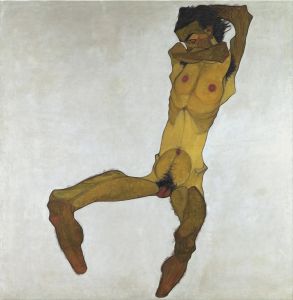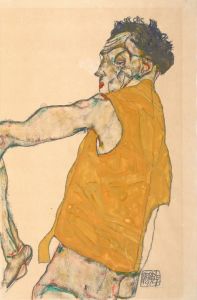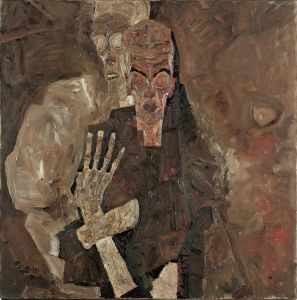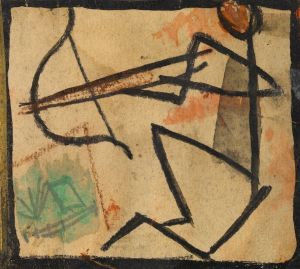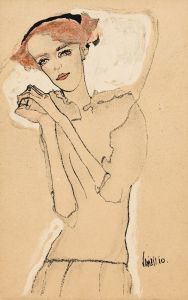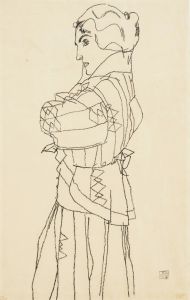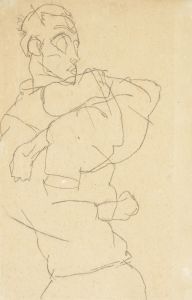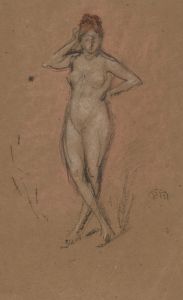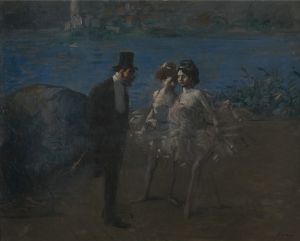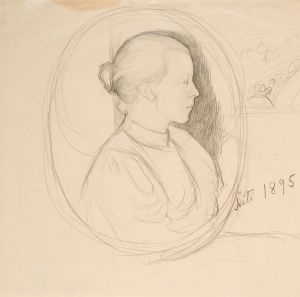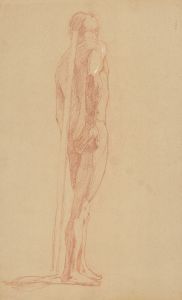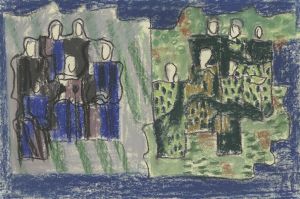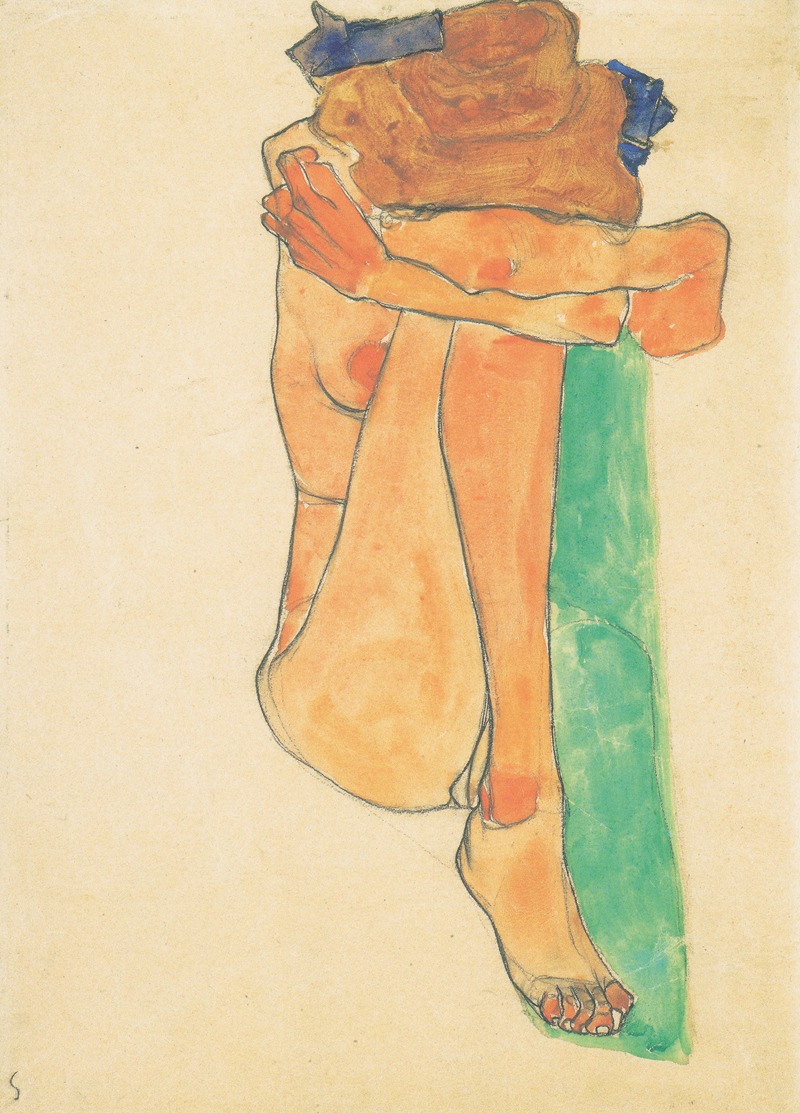
Weiblicher Akt mit grünem Polster
A hand-painted replica of Egon Schiele’s masterpiece Weiblicher Akt mit grünem Polster, meticulously crafted by professional artists to capture the true essence of the original. Each piece is created with museum-quality canvas and rare mineral pigments, carefully painted by experienced artists with delicate brushstrokes and rich, layered colors to perfectly recreate the texture of the original artwork. Unlike machine-printed reproductions, this hand-painted version brings the painting to life, infused with the artist’s emotions and skill in every stroke. Whether for personal collection or home decoration, it instantly elevates the artistic atmosphere of any space.
"Weiblicher Akt mit grünem Polster" (Female Nude with Green Cushion) is a painting by the Austrian artist Egon Schiele, created in 1910. Schiele, a protégé of Gustav Klimt, is known for his distinctive style that often explores themes of sexuality, death, and the human form. This particular work exemplifies Schiele's unique approach to the depiction of the human body, characterized by its raw and expressive nature.
The painting features a female nude reclining against a green cushion, a common motif in Schiele's work that highlights his interest in the human figure and its emotional expression. The use of a green cushion not only serves as a compositional element but also adds a contrasting color that enhances the visual impact of the figure. Schiele's use of color is deliberate and often symbolic, contributing to the emotional intensity of his work.
Schiele's style is marked by its bold lines and stark contrasts, which are evident in "Weiblicher Akt mit grünem Polster." The contours of the figure are sharply defined, emphasizing the angularity and tension in the pose. This approach reflects Schiele's departure from the more decorative and fluid style of his mentor, Klimt, and aligns with the Expressionist movement, which sought to convey emotional experience rather than physical reality.
The painting is also notable for its psychological depth. Schiele's nudes are often imbued with a sense of vulnerability and introspection, inviting viewers to engage with the subject on a more intimate level. This is achieved through the figure's pose and expression, which suggest a complex interplay of emotions. The direct gaze of the subject, a common feature in Schiele's portraits, challenges the viewer and creates a sense of immediacy and connection.
Egon Schiele's work, including "Weiblicher Akt mit grünem Polster," was initially met with controversy due to its explicit content and unconventional style. However, over time, his contributions to modern art have been recognized for their innovation and emotional depth. Schiele's exploration of the human condition, particularly through the lens of sexuality and identity, has cemented his place as a significant figure in early 20th-century art.
The painting is part of Schiele's broader oeuvre that continues to be studied and appreciated for its artistic and historical significance. His works are housed in major collections and museums worldwide, reflecting his enduring influence on contemporary art. "Weiblicher Akt mit grünem Polster" remains a testament to Schiele's ability to capture the complexities of the human experience through his distinctive artistic vision.





